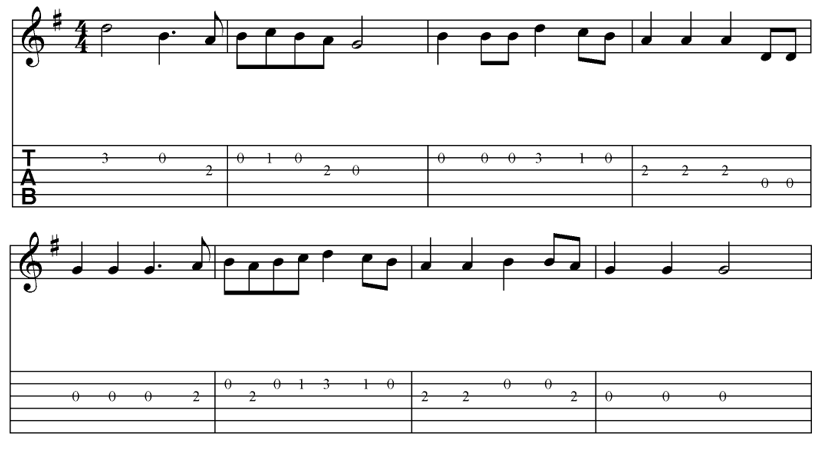When we play a run of single notes in succession, we are producing a Melody, or melodic line.
Depending on the order of the notes, and what notes we play, we can make a melody sound happy (major), sad (minor), strong, emotional, cheerful etc.
A pattern of notes played at set intervals apart is referred to as a Scale.
There are many different scales around, all created by dividing up the Octave into different intervals.
The Chromatic Scale is the scale from which all other scales are derived, since it is just a scale of all the possible notes between the Root note and the octave:
| 1 | 2 | 3 | 4 | 5 | 6 | 7 | 8 | 9 | 10 | 11 | 12 | 1 |
| A | A# | B | C | C# | D | D# | E | F | F# | G | G# | A |
| (Bb) | (Db) | (Eb) | (Gb) | (Ab) |
The Root Note is the note from which the scale starts (and ends). Here the chromatic scale starts on A, so A is referred to as the root note.
We can see that by leaving some notes out, and including others, there is a wide range of possible scales we can create. Of course, some patterns will sound better than others.
Some scales only contain five notes (for example, the Pentatonic scale) the more common ones contain seven.
By far the most common scales in western music are the Major scale and the Minor scales. These scales can start on any chromatic note, which will give the scale its name, and contain a total of seven notes.
So if we had a major scale starting on G#, we would call it a G# major scale.
Here is an example of a melody played on a guitar. It is the melody to ‘Lord of the Dance’ by Sydney Carter, using the G major scale:

Listen: